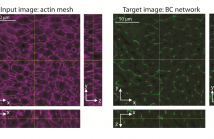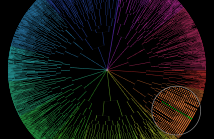
- Read more about PREDICTION OF MULTIPLE 3D TISSUE STRUCTURES BASED ON SINGLE-MARKER IMAGES USING CONVOLUTIONAL NEURAL NETWORKS
- Log in to post comments
A quantitative understanding of complex biological systems such as tissues requires reconstructing the structure of the different components of the system. Fluorescence microscopy provides the means to visualize simultaneously several tissue components. However, it can be time consuming and is limited by the number of fluorescent markers that can be used. In this study, we describe a toolbox of algorithms based on convolutional neural networks for the prediction of 3D tissue structures by learning features embedded within single-marker images.
- Categories:
 20 Views
20 Views
- Read more about BACTERIAL IMAGE ANALYSIS AND SINGLE-CELL ANALYTICS TO DECIPHER THE BEHAVIOR OF LARGE MICROBIAL COMMUNITIES
- Log in to post comments
Time-lapse microscopy provides 4D imaging data for monitoring and studying down to single-cell, the stochastic processes involved as bacterial colonies grow and interact under different stress conditions. Two main factors prevent high throughput analysis: a) cell segmentation and tracking are very time-consuming and error-prone and b) analytics tools are lacking to interpret the plethora of features extracted from a complex “cell-movie.” To address both limitations, we have recently developed a multi-resolution Bio-image Analysis & Single-Cell Analytics framework, called BaSCA.
- Categories:
 24 Views
24 Views